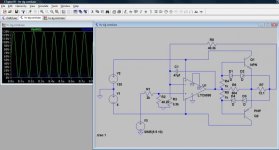The first question that requires an answer here is still exactly what is the current tachometer driving? From your needs, I assume that it is providing a speed reference to something downstream from the cabler. I'm having a hard time thinking of any drive that requires a 0-150VDC reference.
I'd go the extra couple yards, and convert my downstream equipment to take a 0-10VDC reference, and then just use the F/V converter you planned on, or even better, just use an analog output from your new drive representing its actual speed.
I left that part out for the sake of brevity, but if it helps, I'll explain.
The machine in question is an "antique" cabling machine. The company that made it is no longer in business and the documentation for it was lost long ago. There is no chance of getting new copies of that documentation.
As the machine was designed, it uses the 0-150V tach feedback not only for the 25HP DC drive feedback, but also for several one-off proprietary control boards. These control boards perform various functions relating to lay length of the cable (#of twists per ft), and traverse rate (rate of side to side movement per ft of spooled cable). These functions include servo speed, engaging/disengaging several clutches, clutch power, a motorized variator setpoint, servo direction, servo speed, et. al. (I'm not sure what else, as I haven't figured out what all the boards do). Anyway, this 0-150V signal splits several times and goes to all these boards. The boards all need this reference, as all their functions are related in some way to the main motor speed. I'm sure that on each board, the signal is divided down to some useful level, but without the drawings I would have to painstakingly map out each board and reverse-engineer it to accept a 0-10V signal instead of a 0-150V one. Due to down time requirements, I won't have time to do this. So I'm looking for some way to keep the 0-150V signal.
BTW I did get a call back from KB, and they said it wouldn't work. The DC drive's output requires some sort of substantial load (like a motor) in order for the SCRs to fire properly. The fact that it's SCR fired makes me think it wouldn't be a very clean "signal" anyway.
I'm currently playing around in LTSpice designing my own 0-10V > 0-150V signal conditioner. It's looking pretty promising actually:





